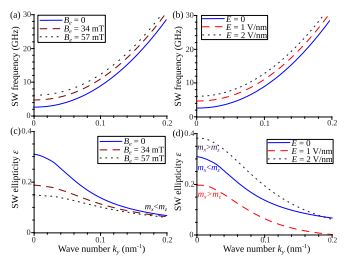Spin-wave transmission through an internal boundary: Beyond the scalar approximation

The transmission and reflection of a spin wave at an internal boundary created by the local variation of anisotropy (or a bias magnetic field) are studied taking into account not only the changes in the wave amplitude, but also the changes in the wave polarization. It is shown that the account of the changes in the spin-wave polarization before and after the boundary leads to (i) increase of the spin-wave amplitude reflection coefficient, (ii) appearance of an additional phase shift 0,π in both transmitted and reflected waves, and (iii) creation of additional evanescent waves in the vicinity of the boundary. It is also shown that even when significant changes in the transmitted wave polarization take place at the boundary, a spin wave could pass a finite-width boundary without reflection, if a certain resonance condition is satisfied. The effect of the polarization change at an internal boundary is especially pronounced for the exchange-dominated spin waves, while in the case of the dipole-dominated spin waves, this effect can vanish completely for certain configurations of the static magnetization. This work has been published in PRB and can be accessed here.
